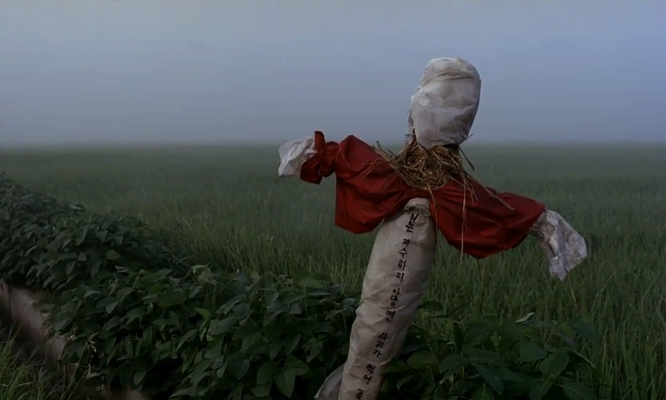In Psychology, you get to read about a ton of therapies. It’s mind-boggling how different theorists have looked at human nature differently and have come up with different, often somewhat contradictory, theoretical approaches.
Yet, you can’t deny the kernel of truth that’s there in all of them. All therapies, despite being different, have one thing in common- they all aim to solve people’s problems. They all aim to equip people with problem-solving strategies to help them deal with their life problems.
Problem-solving is really at the core of everything we do. Throughout our lives, we’re constantly trying to solve one problem or another. When we can’t, all sorts of psychological problems take hold. Getting good at solving problems is a fundamental life skill.
Problem-solving stages
What problem-solving does is take you from an initial state (A) where a problem exists to a final or goal state (B), where the problem no longer exists.
To move from A to B, you need to perform some actions called operators. Engaging in the right operators moves you from A to B. So, the stages of problem-solving are:
- Initial state
- Operators
- Goal state
The problem itself can either be well-defined or ill-defined. A well-defined problem is one where you can clearly see where you are (A), where you want to go (B), and what you need to do to get there (engaging the right operators).
For example, feeling hungry and wanting to eat can be seen as a problem, albeit a simple one for many. Your initial state is hunger (A) and your final state is satisfaction or no hunger (B). Going to the kitchen and finding something to eat is using the right operator.
In contrast, ill-defined or complex problems are those where one or more of the three problem solving stages aren’t clear. For example, if your goal is to bring about world peace, what is it exactly that you want to do?
It’s been rightly said that a problem well-defined is a problem half-solved. Whenever you face an ill-defined problem, the first thing you need to do is get clear about all the three stages.
Often, people will have a decent idea of where they are (A) and where they want to be (B). What they usually get stuck on is finding the right operators.
Initial theory in problem-solving
When people first attempt to solve a problem, i.e. when they first engage their operators, they often have an initial theory of solving the problem. As I mentioned in my article on overcoming challenges for complex problems, this initial theory is often wrong.
But, at the time, it’s usually the result of the best information the individual can gather about the problem. When this initial theory fails, the problem-solver gets more data, and he refines the theory. Eventually, he finds an actual theory i.e. a theory that works. This finally allows him to engage the right operators to move from A to B.
Problem-solving strategies
These are operators that a problem solver tries to move from A to B. There are several problem-solving strategies but the main ones are:
- Algorithms
- Heuristics
- Trial and error
- Insight
1. Algorithms
When you follow a step-by-step procedure to solve a problem or reach a goal, you’re using an algorithm. If you follow the steps exactly, you’re guaranteed to find the solution. The drawback of this strategy is that it can get cumbersome and time-consuming for large problems.
Say I hand you a 200-page book and ask you to read out to me what’s written on page 100. If you start from page 1 and keep turning the pages, you’ll eventually reach page 100. There’s no question about it. But the process is time-consuming. So instead you use what’s called a heuristic.
2. Heuristics
Heuristics are rules of thumb that people use to simplify problems. They’re often based on memories from past experiences. They cut down the number of steps needed to solve a problem, but they don’t always guarantee a solution. Heuristics save us time and effort if they work.
You know that page 100 lies in the middle of the book. Instead of starting from page one, you try to open the book in the middle. Of course, you may not hit page 100, but you can get really close with just a couple of tries.
If you open page 90, for instance, you can then algorithmically move from 90 to 100. Thus, you can use a combination of heuristics and algorithms to solve the problem. In real life, we often solve problems like this.
When police are looking for suspects in an investigation, they try to narrow down the problem similarly. Knowing the suspect is 6 feet tall isn’t enough, as there could be thousands of people out there with that height.
Knowing the suspect is 6 feet tall, male, wears glasses, and has blond hair narrows down the problem significantly.
3. Trial and error
When you have an initial theory to solve a problem, you try it out. If you fail, you refine or change your theory and try again. This is the trial-and-error process of solving problems. Behavioral and cognitive trial and error often go hand in hand, but for many problems, we start with behavioural trial and error until we’re forced to think.
Say you’re in a maze, trying to find your way out. You try one route without giving it much thought and you find it leads to nowhere. Then you try another route and fail again. This is behavioural trial and error because you aren’t putting any thought into your trials. You’re just throwing things at the wall to see what sticks.
This isn’t an ideal strategy but can be useful in situations where it’s impossible to get any information about the problem without doing some trials.
Then, when you have enough information about the problem, you shuffle that information in your mind to find a solution. This is cognitive trial and error or analytical thinking. Behavioral trial and error can take a lot of time, so using cognitive trial and error as much as possible is advisable. You got to sharpen your axe before you cut the tree.
4. Insight
When solving complex problems, people get frustrated after having tried several operators that didn’t work. They abandon their problem and go on with their routine activities. Suddenly, they get a flash of insight that makes them confident they can now solve the problem.
I’ve done an entire article on the underlying mechanics of insight. Long story short, when you take a step back from your problem, it helps you see things in a new light. You make use of associations that were previously unavailable to you.
You get more puzzle pieces to work with and this increases the odds of you finding a path from A to B, i.e. finding operators that work.
Pilot problem-solving
No matter what problem-solving strategy you employ, it’s all about finding out what works. Your actual theory tells you what operators will take you from A to B. Complex problems don’t reveal their actual theories easily solely because they are complex.
Therefore, the first step to solving a complex problem is getting as clear as you can about what you’re trying to accomplish- collecting as much information as you can about the problem.
This gives you enough raw materials to formulate an initial theory. We want our initial theory to be as close to an actual theory as possible. This saves time and resources.
Solving a complex problem can mean investing a lot of resources. Therefore, it is recommended you verify your initial theory if you can. I call this pilot problem-solving.
Before businesses invest in making a product, they sometimes distribute free versions to a small sample of potential customers to ensure their target audience will be receptive to the product.
Before making a series of TV episodes, TV show producers often release pilot episodes to figure out whether the show can take off.
Before conducting a large study, researchers do a pilot study to survey a small sample of the population to determine if the study is worth carrying out.
The same ‘testing the waters’ approach needs to be applied to solving any complex problem you might be facing. Is your problem worth investing a lot of resources in? In management, we’re constantly taught about Return On Investment (ROI). The ROI should justify the investment.
If the answer is yes, go ahead and formulate your initial theory based on extensive research. Find a way to verify your initial theory. You need this reassurance that you’re going in the right direction, especially for complex problems that take a long time to solve.

Getting your causal thinking right
Problem solving boils down to getting your causal thinking right. Finding solutions is all about finding out what works, i.e. finding operators that take you from A to B. To succeed, you need to be confident in your initial theory (If I do X and Y, they’ll lead me to B). You need to be sure that doing X and Y will lead you to B- doing X and Y will cause B.
All obstacles to problem-solving or goal-accomplishing are rooted in faulty causal thinking leading to not engaging the right operators. When your causal thinking is on point, you’ll have no problem engaging the right operators.
As you can imagine, for complex problems, getting our causal thinking right isn’t easy. That’s why we need to formulate an initial theory and refine it over time.
I like to think of problem-solving as the ability to project the present into the past or into the future. When you’re solving problems, you’re basically looking at your present situation and asking yourself two questions:
“What caused this?” (Projecting present into the past)
“What will this cause?” (Projecting present into the future)
The first question is more relevant to problem-solving and the second to goal-accomplishing.
If you find yourself in a mess, you need to answer the “What caused this?” question correctly. For the operators you’re currently engaging to reach your goal, ask yourself, “What will this cause?” If you think they cannot cause B, it’s time to refine your initial theory.

